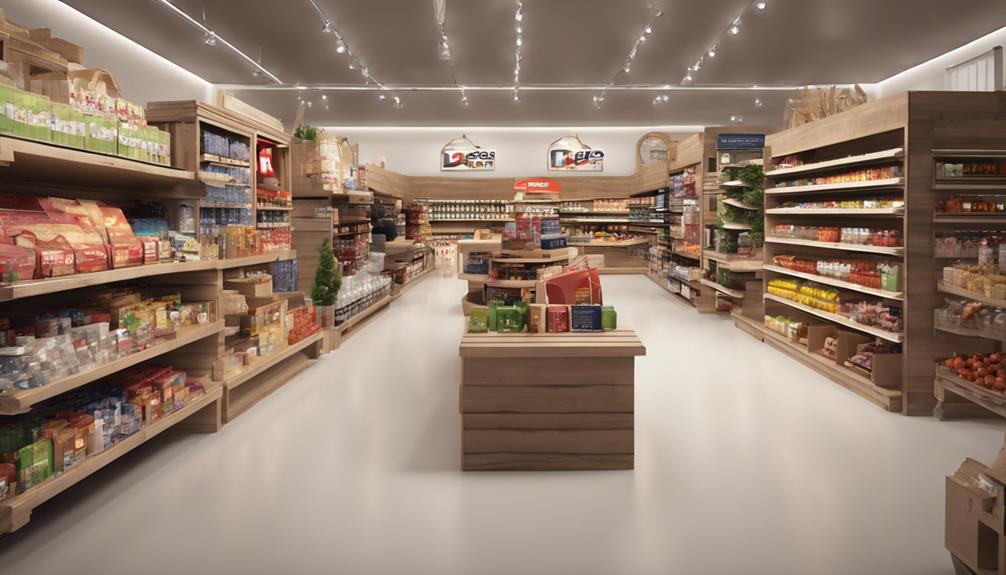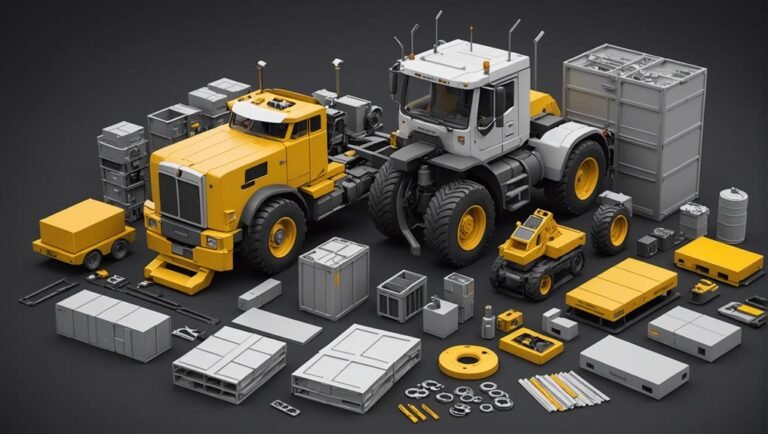Big-Box Retailer: Definition, Examples, Vs. Small-Box Stores
Big-Box retailers, known for their expansive layouts and wide product range, leverage economies of scale for competitive pricing. Examples include Walmart, Home Depot, and Costco, dominating the market with diverse offerings. Contrasted with small retailers, big-box stores offer convenience and variety, while small stores focus on personalized service. Challenges faced by big-box retailers include community impact, sustainability concerns, and operational efficiency. Criticisms revolve around environmental issues, community displacement, and economic homogenization. These insights offer a glimpse into the complex dynamics between big and small retailers, hinting at deeper implications beyond the surface comparison.
Key Takeaways
- Big-box retailers offer competitive pricing and wide selection.
- Small retailers focus on personalized service and unique offerings.
- Big-box stores use economies of scale for affordability and convenience.
- Small retailers contribute to community connection and personalized experiences.
- Big-box retailers impact local economies and small businesses.
Big-Box Retailer Definition
Big-box retailers, characterized by their expansive physical layouts and diverse product offerings, play a significant role in the retail industry by leveraging economies of scale to provide competitive pricing and convenience to consumers. Their economic impact is substantial, influencing consumer behavior through lower prices and a wide range of choices.
Consumers are drawn to big-box retailers for their affordability and variety, impacting smaller local businesses that struggle to compete on pricing. This shift in consumer behavior towards larger retailers has led to concerns about the long-term sustainability of smaller establishments.
Understanding the economic dynamics and consumer preferences surrounding big-box retailers is essential for stakeholders in the retail industry to adapt and thrive in a competitive market landscape.
Examples of Big-Box Retailers
Frequently overshadowing their smaller competitors, prominent players in the retail industry exemplify the dominance and influence of large-scale operations. Big-box retailers like Walmart, Home Depot, and Costco have a significant impact on communities and demonstrate market dominance through their extensive presence and revenue generation. These retail giants not only offer a wide range of products at competitive prices but also create job opportunities and drive economic growth in various regions. However, their market dominance can negatively affect smaller local businesses, leading to concerns about the long-term sustainability of smaller retailers in the face of such fierce competition.
- Walmart operates globally, impacting communities worldwide.
- Home Depot's services extend beyond retail, influencing local markets.
- Costco's membership model contributes to its market dominance.
Big-Box Vs. Small Retailers
Comparing the retail landscape between large-scale big-box retailers and smaller local shops reveals distinct differences regarding pricing strategies, customer experiences, and impacts on communities. Big-box retailers often attract consumers with lower prices due to economies of scale, while smaller retailers may focus on personalized customer service. When it comes to market competition, big-box stores have the advantage of offering a wide variety of products at competitive prices, which can sometimes overshadow the more niche offerings of small retailers. However, consumer preferences play a significant role, with some customers preferring the convenience and affordability of big-box stores, while others prioritize the unique products and community support provided by smaller shops.
| Aspects | Big-Box Retailers | Small Retailers |
|---|---|---|
| Pricing Strategy | Competitive pricing due to economies of scale | Personalized pricing based on unique offerings |
| Customer Experience | Convenience and wide selection | Personalized service and community connection |
| Impact on Community | Can impact local businesses and economies | Support local economies and community growth |
Challenges Faced by Big-Box Retailers
The operational complexity inherent in the expansive supply chains of large-scale retail corporations presents a myriad of challenges for big-box retailers in today's competitive market landscape. These challenges include:
- Impact on Communities: Big-box retailers face scrutiny regarding their effects on local communities, such as displacing small businesses and altering the retail landscape.
- Environmental Concerns: The environmental impact of big-box retailers, stemming from their large-scale operations and resource consumption, raises sustainability issues.
- Operational Efficiency: Balancing inventory management, logistics, and customer demand while maintaining cost-effectiveness poses a significant challenge for big-box retailers aiming to remain competitive.
Criticisms of Big-Box Retailers
Critics of big-box retailers point to significant concerns regarding their impact on local economies and communities. One major criticism is the environmental impact of large-scale operations, such as increased traffic congestion, pollution from transportation, and the carbon footprint of expansive store spaces.
Additionally, big-box retailers are often accused of contributing to community displacement by driving out smaller, locally-owned businesses. This can lead to economic homogenization and a loss of community character. The dominance of big-box stores can also result in reduced consumer choices and less diverse shopping experiences for residents.
Additional Big-Box Retailer Examples
Among the notable big-box retailers in the market today, Costco stands out as a membership-only retail warehouse with a global presence. Costco's success can be attributed to its retailer expansion strategies, focusing on opening new warehouse locations worldwide to cater to a growing customer base. Additionally, Costco's customer loyalty trends are remarkable, with a significant emphasis on providing high-quality products at competitive prices to retain and attract loyal members. Additionally, Costco's unique business model of offering bulk products at discounted prices contributes to its customer retention and satisfaction levels.
Costco continues to expand internationally, tapping into new markets and increasing its global footprint.
The loyalty program at Costco rewards frequent shoppers with exclusive discounts and benefits.
Costco's emphasis on providing a diverse range of high-quality products aligns with customer preferences and helps in building long-term customer loyalty.
Miscellaneous Information on Big-Box Retailers
In the domain of retail analysis, big-box retailers stand as prominent players due to their extensive physical presence and diverse product offerings.
While big-box stores like Walmart and Costco are known for offering lower prices and a wide selection of products, they face criticisms regarding their environmental impact, including concerns about depleting natural resources.
However, supporters of big-box retailers highlight the positive aspects such as job creation and economic boosts in small communities.
Despite the environmental challenges, big-box retailers have been instrumental in creating employment opportunities and driving economic growth in various regions.
Balancing these aspects remains a critical consideration for the ongoing success and sustainability of big-box retail operations.
Conclusion
To sum up, big-box retailers stand as titans in the retail industry, wielding their vast product offerings and economies of scale to dominate the market. Despite their efficiency and competitive prices, they face challenges and criticisms related to their impact on local economies and the environment.
Like towering giants in a crowded marketplace, big-box retailers must navigate these obstacles to maintain their dominance and relevance in the ever-evolving retail landscape.







